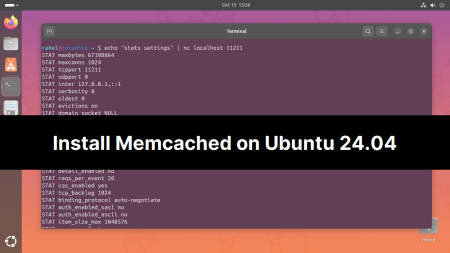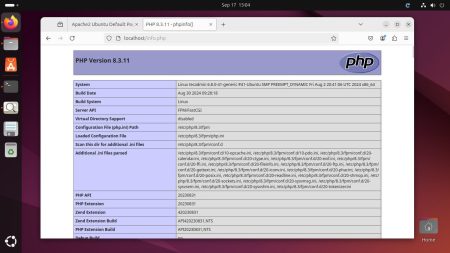LAMP (Linux, Apache, MySQL and PHP ) Stack is the most popular environment in PHP website development and hosting. Linux is the operating system, Apache is the popular web server developed by Apache Foundation. MySQL is relational database management system used for storing data and PHP is an development language.
This article will help you to Install Apache 2.4, MySQL 5.5 and PHP 5.5 on Ubuntu 14.04 Systems. Thanks to Ondřej Surý, Which is maintaining the PPA for PHP 5.5 in launchpad. Use the following steps to setup complete web server enviroment using Ubuntu 14.04 LTS operating system.
Step 1: Install PHP 5.5
Use the following set of command to add PPA of PHP-5.5 in our system and install it. Some times this setup causes some issues so we are also installing python-software-properties package in our system.
$ sudo apt-get install python-software-properties $ sudo add-apt-repository ppa:ondrej/php5 $ sudo apt-get update $ sudo apt-get install -y php5
Verify installed PHP5 version using following command.
rahul@tecadmin:~$ php -vPHP 5.5.28 -1+deb.sury.org~trusty+1 (cli) (built: Aug 16 2015 09:30:05) Copyright (c) 1997-2015 The PHP Group Zend Engine v2.5.0, Copyright (c) 1998-2015 Zend Technologies with Zend OPcache v7.0.6-dev, Copyright (c) 1999-2015, by Zend Technologies
Step 2: Install Apache2
After installing PHP5 on your system, let’s start installation of Apache2 in your system. Your also required to install libapache2-mod-php5 module to work PHP with Apache2.
$ sudo apt-get install apache2 libapache2-mod-php5
Step 3: Install MySQL
Finally install mysql-server packages for MySQL database. Also install php5-mysql package to use MySQL support using php. Use following command to install it.
$ sudo add-apt-repository -y ppa:ondrej/mysql-5.5 $ sudo apt-get update $ sudo apt-get install mysql-server php5-mysql
Installer will prompt for root password, This password will work for your MySQL root user. After installing MySQL execute following command for initial settings of MySQL server.
$ sudo mysql_secure_installation
Step 4: Restart Apache2, MySQL Services
After installing all services on your system, start all required services.
$ sudo service apache2 restart $ sudo service mysql restart
Step 5: Open Access in Firewall
If you are using iptables, Use following commands to open port 80 for public access of webserver.
Iptables Users:
$ sudo iptables -A INPUT -m state --state NEW -p tcp --dport 80 -j ACCEPT
UFW Users:
$ sudo ufw allow 80/tcp


